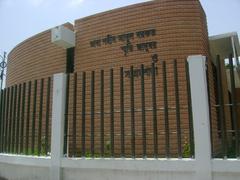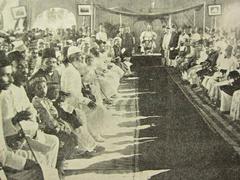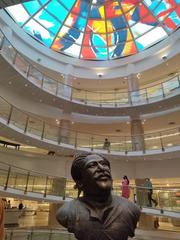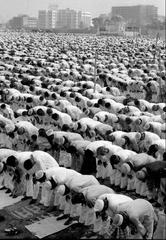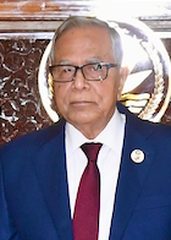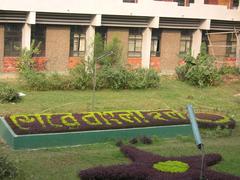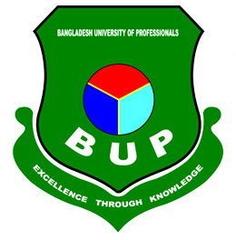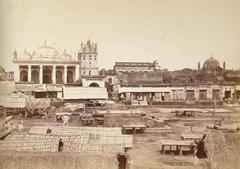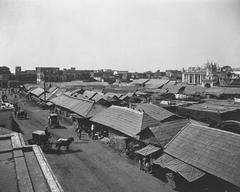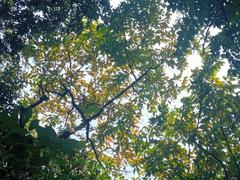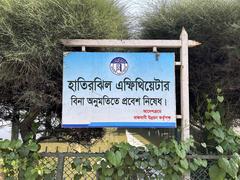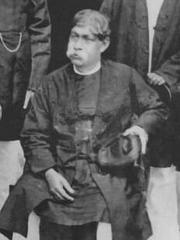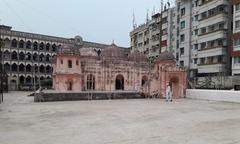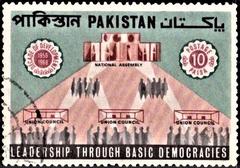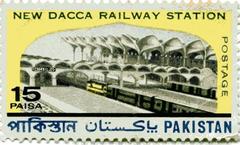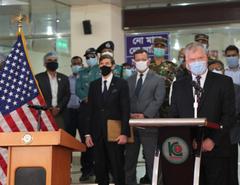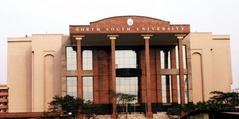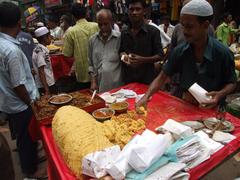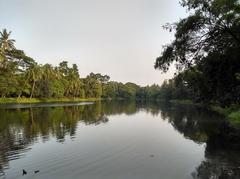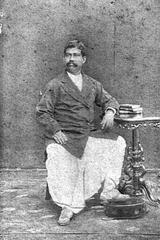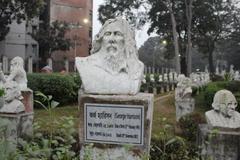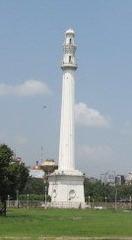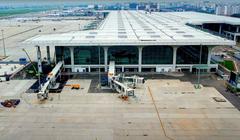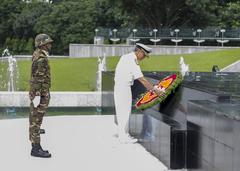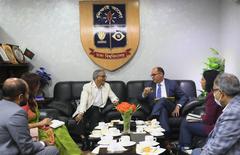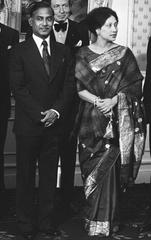Martyred Intellectuals Memorial: Visiting Hours, Tickets, and Comprehensive Guide to Dhaka’s Historical Landmark
Date: 15/06/2025
Introduction
The Martyred Intellectuals Memorial (Shaheed Buddhijibi Smriti Shoudho) in Dhaka, Bangladesh, stands as a powerful symbol of loss, resilience, and remembrance. Erected at Rayerbazar, the site marks the tragic events of December 1971, when intellectuals—teachers, writers, journalists, doctors, and artists—were systematically killed by the Pakistani military and their collaborators in an attempt to cripple the nation’s future. Today, the memorial is not only a site of national mourning but also a focal point for reflection, education, and homage to Bangladesh’s intellectual martyrs (Wikipedia; Everything Explained Today).
This guide provides an in-depth look at the memorial’s history, architectural features, symbolism, visitor information, and practical tips for those wishing to explore this essential Dhaka historical site.
Historical Background
On the night of December 14, 1971, as the Bangladesh Liberation War neared its end, the Pakistani army and their local collaborators abducted and murdered hundreds of Bangladesh’s leading intellectuals. The killings were intended to erase the intellectual backbone of the new nation. The Martyred Intellectuals Memorial was constructed to honor these individuals and educate future generations about their sacrifice (cipdh.gob.ar; daysoftheyear.com).
Location and Setting
Situated in the Rayerbazar area of Mohammadpur, Dhaka, the memorial occupies a historically significant site—the very ground where the bodies of many martyred intellectuals were discovered. The surrounding area, once brickfields, ties the memorial directly to the tragic events it commemorates (Everything Explained Today; Mohammadpur Dhaka Blog; Awalkintheworld).
Architectural Design and Symbolism
Design Competition and Construction
The memorial’s striking design was chosen through a national competition in 1993. Architects Farid Uddin Ahmed and Md Jami-al-Shafi’s vision was realized between 1996 and 1999 under the supervision of Bangladesh’s Public Works Department (Everything Explained Today).
Main Features
- Curved Brick Wall: The centerpiece, a 17.7-meter-high and 115.8-meter-long curved red brick wall, represents the nation’s grief and the irreversible loss of its intellectuals. The wall’s broken ends signify the rupture in Bangladesh’s cultural and educational continuity (Awalkintheworld).
- Square Window: A square aperture on the wall frames the sky, symbolizing hope, freedom, and the unbroken spirit of the Bangladeshi people.
- Water Body and Black Granite Column: A tranquil reflecting pool in front of the wall contains a solitary black granite column, emblematic of mourning and remembrance. The water’s reflective quality enhances the meditative atmosphere (Everything Explained Today).
- Materials and Ambience: The use of raw red brick and granite, with minimal adornment, fosters authenticity and quiet reflection (Mohammadpur Dhaka Blog).
Symbolic Interpretations
- Loss and Grief: The broken wall ends and massiveness convey the trauma and void left by the massacre.
- Transcendence and Hope: The window to the sky guides visitors toward contemplation of future possibilities.
- Purification and Mourning: The water and black granite column underscore reflection, purification, and the endurance of memory.
- Historical Authenticity: The memorial’s location in Rayerbazar grounds remembrance in the reality of 1971 (Awalkintheworld; Mohammadpur Dhaka Blog).
Visitor Information
Visiting Hours and Tickets
- Standard Hours: Open daily from 9:00 AM to 5:00 PM.
- Special Days: On Martyred Intellectuals Day (December 14), hours may start earlier to accommodate ceremonies (The Daily Star).
- Admission: Entry is free; no tickets are required (TBS News).
Accessibility and Facilities
- Physical Access: The memorial features paved walkways and ramps for wheelchair users and those with mobility challenges.
- Rest Areas: Shaded spaces and benches are available for rest.
- Parking and Transport: Parking is available nearby. The memorial is accessible via car, rickshaw, CNG auto-rickshaw, and public transport from central Dhaka (Cholozai).
- Best Times to Visit: Early mornings or late afternoons are recommended to avoid crowds and the midday heat.
- Visitor Etiquette: Maintain a solemn demeanor, keep noise to a minimum, and respect ceremonies and other visitors.
Guided Tours and Educational Programs
- Tours: Guided tours can be arranged through local operators, especially on commemorative days. Educational panels and plaques provide historical context throughout the site.
- Programs: Special events, discussions, and cultural activities are organized, particularly on Martyred Intellectuals Day (Awalkintheworld; bdnews24.com).
Photography
Photography is permitted but should be discreet, especially during official ceremonies or private moments of remembrance.
Major Annual Observance: Martyred Intellectuals Day (December 14)
Every December 14, Bangladesh observes Martyred Intellectuals Day with nationwide mourning. The national flag is flown at half-mast and black flags are displayed across the country. The President and top officials lay wreaths at the memorial, followed by families, freedom fighters, and the public. The day includes:
- Wreath-laying ceremonies
- Milad and Doa Mahfils (prayers)
- Discussion meetings and cultural programs
- Media coverage with documentaries, interviews, and special publications (TBS News; BSS News)
Visitors are advised to arrive early due to large crowds and to observe silence out of respect (The Daily Star).
Nearby Attractions
While visiting the Martyred Intellectuals Memorial, consider exploring:
- Liberation War Museum: Chronicling the history of the 1971 war.
- Shaheed Minar: Honoring the martyrs of the Bengali Language Movement.
- Lalbagh Fort and Ahsan Manzil: Key historical landmarks in Dhaka.
These sites offer a broader understanding of Bangladesh’s journey to independence (Awalkintheworld; UNB).
Quick Reference Table: Key Features
| Feature | Description |
|---|---|
| Curved Brick Wall | 17.7m high, 115.8m long, broken ends; symbolizes loss and grief |
| Square Window | Frames sky; symbolizes hope and future |
| Water Body | Reflective pool; symbolizes contemplation and purification |
| Black Granite Column | Rises from water; symbolizes mourning and enduring memory |
| Location | Rayerbazar, Mohammadpur, Dhaka—site of 1971 intellectual killings |
Frequently Asked Questions (FAQ)
Q: What are the visiting hours of the Martyred Intellectuals Memorial?
A: Open daily from 9:00 AM to 5:00 PM; extended hours on Martyred Intellectuals Day.
Q: Is there an entrance fee?
A: No, entry is free.
Q: Is the memorial accessible to wheelchair users?
A: Yes, with paved pathways and ramps.
Q: Are guided tours available?
A: Yes, through local operators, especially during major commemorations.
Q: Can I take photographs inside the memorial?
A: Yes, but please do so respectfully, particularly during ceremonies.
Q: What is the best time to visit?
A: Early morning or late afternoon for a peaceful experience.
Travel Tips
- Wear comfortable shoes for walking.
- Bring water, especially during hot months.
- Respect the quiet and solemn environment.
- Combine your visit with other nearby historical sites for a richer understanding of Dhaka’s past.
Visuals and Further Resources
- Official Bangladesh Tourism Board
- Liberation War Museum
- Interactive Map of Dhaka Historical Sites including Martyred Intellectuals Memorial
Summary
The Martyred Intellectuals Memorial is more than a monument; it is a living testament to Bangladesh’s courage, sacrifice, and resilience. Through evocative architecture and a profound historical narrative, the site invites visitors to honor those who lost their lives in pursuit of the nation’s freedom. Free admission, accessible facilities, and educational features make it welcoming to all. Plan your visit with respect, engage deeply with the history, and explore the broader tapestry of Dhaka’s historical sites to gain a fuller understanding of Bangladesh’s identity (Everything Explained Today; Wikipedia; The Daily Star).
For up-to-date information, downloadable maps, and event notifications, use the Audiala app and follow our channels for insights and updates.
References
- Martyred Intellectuals Day, Wikipedia
- Mirpur Martyred Intellectual Graveyard, Everything Explained Today
- Martyred Intellectuals Memorial, Mohammadpur Dhaka Blog
- Places to Visit in Dhaka, Awalkintheworld
- Martyred Intellectuals Day: Day of Sorrow and Grief, TBS News
- Govt Programmes Announced for Martyred Intellectuals Day, The Daily Star
- Martyred Intellectuals Day Observance, BSS News
- Location - Rayer Bazar Bodhyo Bhumi, Cholozai
- UNB: Top Historical Places in Dhaka City
- bdnews24.com: Martyred Intellectuals Day
- All Bangla Newspaper: Honoring the Heroes of Liberation
